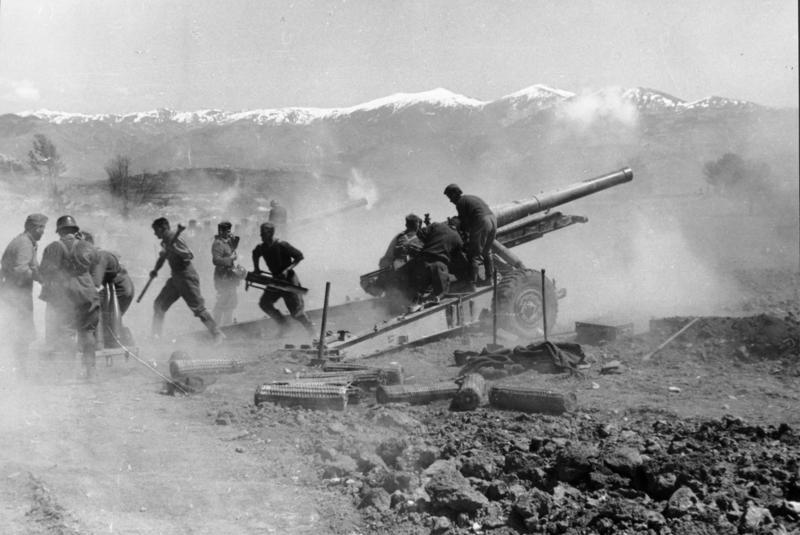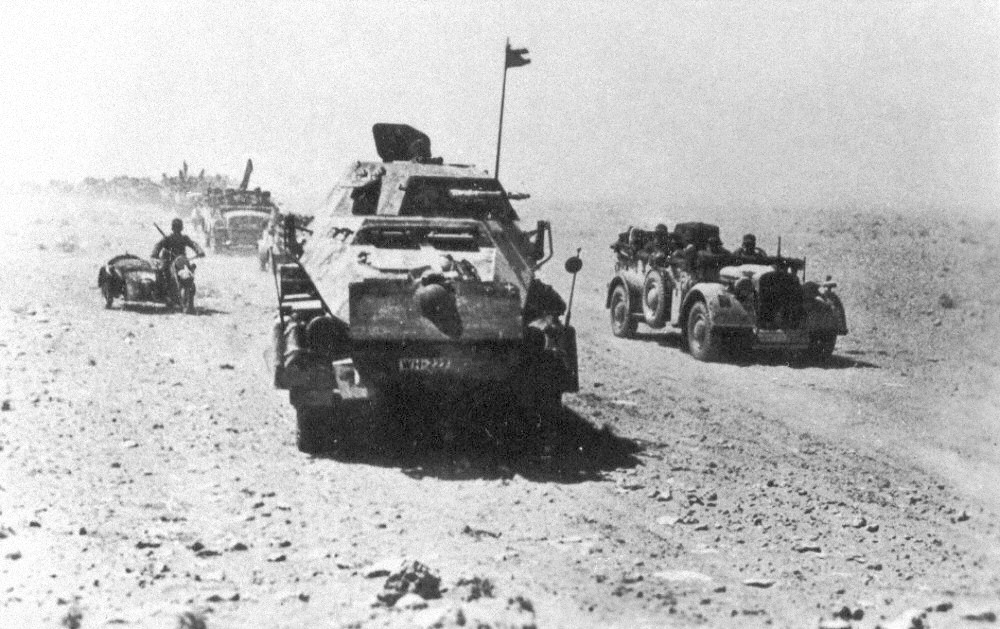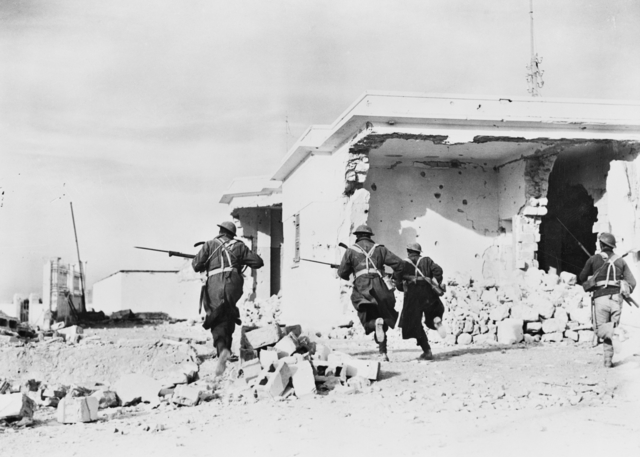|
Dodecanese Regiment
The Dodecanese Regiment or Regiment of the Dodecanesians ( el, Σύνταγμα Δωδεκανησίων) was an infantry regiment of the Hellenic Army composed to a large extent of volunteers from the Dodecanese, Dodecanese Islands and was formed shortly after Greece entered World War II. The islands were under Italian Aegean Islands, Italian occupation since 1912, and consequently the Dodecanesian Greeks had Italian citizenship, yet they were eager to fight against the Italian Army either in the Dodecanese or on the Albanian Front. Formation On October 28, 1940, Greco-Italian War, Italy invaded Greece and the Dodecanesian community in Athens saw it as the best chance to press for the liberation of the Dodecanese Islands. Led by the Dodecanesian Youth organization, the community organized impressive rallies in Athens and at the same time pressed the Greek Government to allow Dodecanesian volunteers with Italian citizenship to enlist in the Hellenic Army. The request was accepted ... [...More Info...] [...Related Items...] OR: [Wikipedia] [Google] [Baidu] |
20th Infantry Division (Greece)
The 20th Infantry Division ( el, 20ή Μεραρχία Πεζικού) was a short-lived formation of the Hellenic Army. It was founded on 24 January 1941, when Greece was already embroiled in the Greco-Italian War. History The division was formed in late February, near Florina, at a time when most available manpower and equipment were already employed in the Greco-Italian War. Consequently, according to its first commander, Major General Karassos, it was "Formed in haste and in offhand manner...from two infantry regiments, without artillery, with officers mostly drawn from the reserves, personnel of every possible origin and type with a large proportion of completely or partially untrained men, with inferior armament, with many deficiencies in communications equipment, arms, men and above all pack animals", it was from the outset of "insufficient cohesion, reduced numerical strength and morale, and greatly reduced fighting ability". It was assigned to the Central Macedonia Army S ... [...More Info...] [...Related Items...] OR: [Wikipedia] [Google] [Baidu] |
Metaxas Line
The Metaxas Line (, ''Grammi Metaxa'') was a chain of fortifications constructed along the line of the Greco-Bulgarian border, designed to protect Greece in case of a Bulgarian invasion after the rearmament of Bulgaria. It was named after Ioannis Metaxas, then Prime Minister of Greece, and chiefly consists of tunnels that led to observatories, emplacements and machine gun nests. The constructions are so sturdy that they survive to this day, some of which are still in active service. Some of them are open to the public. The Metaxas Line consists of 21 independent fortification complexes, the largest of which is Fort Roupel as it covers 6.1 out of the 155 km of the full line and had been constructed at a height of 322 m. Illumination was initially mostly provided by oil-lamps, although generators were also installed. Currently, the fortifications are supplied with public electricity, but they are also equipped with generators. Ventilation was achieved both naturally and art ... [...More Info...] [...Related Items...] OR: [Wikipedia] [Google] [Baidu] |
Amyntaio
Amyntaio ( el, Αμύνταιο, before 1928: Σόροβιτς - ''Sorovits''; Bulgarian/ Macedonian: Суровичево, Сорович), is a town and municipality in the Florina regional unit of Macedonia, Greece. The population of Amyntaio proper is 4,306, while that of the entire municipality is 16,973 (2011). The town is named after the ancient king of Macedon and grandfather of Alexander the Great, Amyntas III. History The village mosque was destroyed and located at the site of the present Municipal Centre building. Archaeological excavations On March 4, 2007, an unknown civilization around four lakes that lasted from 6000 BC to 60 BC has been uncovered in two important excavations of a Neolithic and an Iron Age settlement in the Amyntaio district of Florina, northern Greece. A 7,300-year-old home with a timber floor, remnants of food supplies and blackberry seeds are among the findings in a Neolithic settlement near the lakes of Vegoritida, Petres, Heimatitida and Za ... [...More Info...] [...Related Items...] OR: [Wikipedia] [Google] [Baidu] |
Materiel
Materiel (; ) refers to supplies, equipment, and weapons in military supply-chain management, and typically supplies and equipment in a commercial supply chain context. In a military context, the term ''materiel'' refers either to the specific needs (excluding manpower) of a force to complete a specific mission, or the general sense of the needs (excluding manpower) of a functioning army. An important category of materiel is commonly referred to as ordnance, especially concerning mounted guns (artillery) and the shells it consumes. Along with fuel, and munitions in general, the steady supply of ordnance is an ongoing logistic challenge in active combat zones. Materiel management consists of continuing actions relating to planning, organizing, directing, coordinating, controlling, and evaluating the application of resources to ensure the effective and economical support of military forces. It includes provisioning, cataloging, requirements determination, acquisition, distrib ... [...More Info...] [...Related Items...] OR: [Wikipedia] [Google] [Baidu] |
Kampfgruppe
In military history, the German term (pl. ; abbrev. KG, or KGr in usage during World War II, literally "fighting group" or "battle group") can refer to a combat formation of any kind, but most usually to that employed by the of Nazi Germany and its allies during World War II and, to a lesser extent, of the German Empire in World War I. It also referred to bomber groups in ''Luftwaffe'' usage, which themselves consisted of three or four (squadrons), and usually (but not exclusively) existed within bomber wings of three or four per wing. Nature The ''Kampfgruppe'' was an ''ad hoc'' combined arms formation, usually employing a combination of tanks, infantry, and artillery (including anti-tank) elements, generally organised for a particular task or operation.While the word ''Kampfgruppe'' in German literally refers to any battle group, the modern usage in the English-speaking world is restricted to World War II. ''Kampfgruppen'' in World War I lacked the panzer componen ... [...More Info...] [...Related Items...] OR: [Wikipedia] [Google] [Baidu] |
1st SS Panzer Division Leibstandarte SS Adolf Hitler
The 1st SS Panzer Division Leibstandarte SS Adolf Hitler or SS Division Leibstandarte, abbreviated as LSSAH, (german: 1. SS-Panzerdivision "Leibstandarte SS Adolf Hitler") began as Adolf Hitler's personal bodyguard unit, responsible for guarding the Führer's person, offices, and residences. Initially the size of a regiment, the LSSAH eventually grew into an elite division-sized unit during World War II. The LSSAH participated in combat during the invasion of Poland, and was amalgamated into the Waffen-SS together with the '' SS-Verfügungstruppe'' (SS-VT) and the combat units of the '' SS-Totenkopfverbände'' (SS-TV) prior to Operation Barbarossa in 1941. By mid-1942 it had been increased in size from a regiment to a Panzergrenadier division and was designated SS Panzergrenadier Division "Leibstandarte SS Adolf Hitler". It received its final form as a Panzer division in October 1943. Members of the LSSAH perpetrated numerous atrocities and war crimes, including the Malmedy ... [...More Info...] [...Related Items...] OR: [Wikipedia] [Google] [Baidu] |
6th Division (Australia)
The 6th Division was an infantry Division (military), division of the Australian Army. It was raised briefly in 1917 during World War I, but was broken up to provide reinforcements before seeing action. It was not re-raised until the outbreak of World War II, when it was formed as a unit of the Second Australian Imperial Force (2nd AIF). Throughout 1940–41 it served in the North African Campaign, the Battle of Greece, Greek campaign, on Battle of Crete, Crete and in Syria-Lebanon campaign, Syria, fighting against the Germans, Italians and Vichy French. In 1942, the division left the Mediterranean and Middle East theatre of World War II, Middle East and returned to Australia to meet the threat of Japan's entry into the war. Part of the division garrisoned Ceylon for a short period of time, before the division was committed to the New Guinea campaign. In New Guinea, its component brigades had a major role in the successful counter-offensive along the Kokoda Track Campaign, Kokoda ... [...More Info...] [...Related Items...] OR: [Wikipedia] [Google] [Baidu] |
Iven Mackay
Lieutenant General Sir Iven Giffard Mackay, (7 April 1882 – 30 September 1966) was a senior Australian Army officer who served in both world wars. Mackay graduated from the University of Sydney in 1904 and taught physics there from 1910 until 1914, when he joined the Australian Imperial Force shortly after the outbreak of the First World War. He served with the 4th Infantry Battalion at Gallipoli, where he distinguished himself in hand-to-hand fighting at the Battle of Lone Pine. In April 1916, he assumed command of the 4th Infantry Battalion on the Western Front and led it at the Battle of Pozières, Battle of Bullecourt and Battle of Broodseinde. He was promoted to brigadier general in June 1918, and led the 1st Infantry Brigade at the Battle of Hazebrouck, the Battle of Amiens and in the attack on the Hindenburg Line. After the war, Mackay studied physics at the University of Cambridge under Ernest Rutherford before returning to Australia and his old job as ... [...More Info...] [...Related Items...] OR: [Wikipedia] [Google] [Baidu] |
German Invasion Of Yugoslavia
The invasion of Yugoslavia, also known as the April War or Operation 25, or ''Projekt 25'' was a Nazi Germany, German-led attack on the Kingdom of Yugoslavia by the Axis powers which began on 6 April 1941 during World War II. The order for the invasion was put forward in "Führer Directive No. 25", which Adolf Hitler issued on 27 March 1941, following a Yugoslav coup d'état that overthrew the pro-Axis government. The invasion commenced with an overwhelming Operation Retribution (1941), air attack on Belgrade and facilities of the Royal Yugoslav Air Force (VVKJ) by the Luftwaffe (German Air Force) and attacks by German Army (Wehrmacht), German land forces from southwestern Kingdom of Bulgaria, Bulgaria. These attacks were followed by German thrusts from Kingdom of Romania, Romania, Kingdom of Hungary (1920–1946), Hungary and the Ostmark (Austria), Ostmark (modern-day Austria, then part of Germany). Italian forces were limited to air and artillery attacks until 11 April, when t ... [...More Info...] [...Related Items...] OR: [Wikipedia] [Google] [Baidu] |
Haliacmon
The Haliacmon ( el, Αλιάκμονας, ''Aliákmonas''; formerly: , ''Aliákmon'' or ''Haliákmōn'') is the longest river flowing entirely in Greece, with a total length of . In Greece there are three rivers longer than Haliakmon, Maritsa ( el, Έβρος), Struma (Strymónas), both coming from Bulgaria, and Vardar ( el, Αξιός) coming from North Macedonia, but the length of each one of them in Greek territory is less than that of Haliakmon, which flows entirely in Greece. ''Haliacmon'' is the traditional English name for the river, but many sources cite the formerly official Katharevousa version of the name, ''Aliákmon''. Today, the only official variant is the demotic ''Aliákmonas''. It flows through the Greek regions of West Macedonia (Kastoria, Grevena and Kozani regional units) and Central Macedonia (Imathia and Pieria regional units). Its drainage basin is . Name The name (in Greek) is composite and derives from (salt, sea) and (anvil). In Greek mythology Hali ... [...More Info...] [...Related Items...] OR: [Wikipedia] [Google] [Baidu] |
Vermio Mountains
The Vermio Mountains ( el, Βέρμιο), known in antiquity as the Bermion ( el, Βέρμιον), is a mountain range in northern Greece. It lies between the Imathia Regional Unit of the Central Macedonia Region and the Kozani Regional Unit of the Western Macedonia Region. The range is west of the plain of Kambania. The town of Veria, which is the capital of Imathia, is built on the foot of these mountains. The highest point in the range is the peak Chamiti ( el, Χαμίτη), elevation, west of Naousa. In Turkish the mountain is known as Karatash (Karataş), and in Bulgarian it is known as Karakamen (Каракамен). The Vermio Mountains are the site of ski resorts such as Seli and Tria Pente Pigadia. It was mentioned in antiquity by Pliny, Strabo, Stephen of Byzantium, Hierocles, Ptolemy, and Thucydides and Herodotus. In classical times the mountain was thought by Herodotus to be impassible and according to tradition, paradise was to be held on the other side. During ... [...More Info...] [...Related Items...] OR: [Wikipedia] [Google] [Baidu] |





